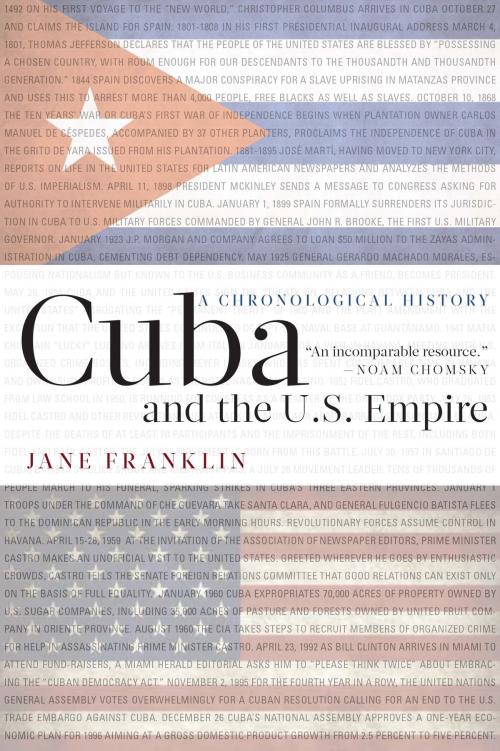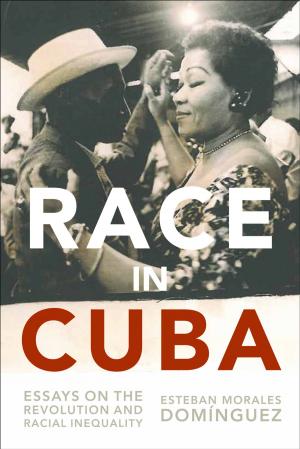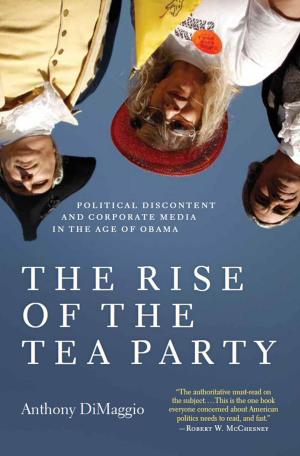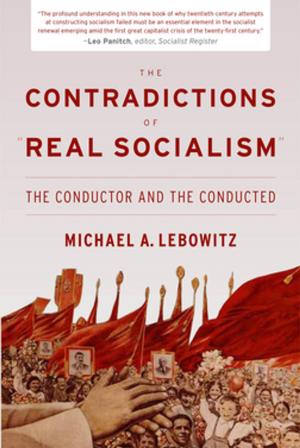Cuba and the U.S. Empire
A Chronological History
Fiction & Literature, Literary Theory & Criticism, Caribbean & West Indian, Nonfiction, Social & Cultural Studies, Political Science| Author: | Jane Franklin | ISBN: | 9781583676073 |
| Publisher: | Monthly Review Press | Publication: | May 1, 2016 |
| Imprint: | Monthly Review Press | Language: | English |
| Author: | Jane Franklin |
| ISBN: | 9781583676073 |
| Publisher: | Monthly Review Press |
| Publication: | May 1, 2016 |
| Imprint: | Monthly Review Press |
| Language: | English |
The 1959 Cuban Revolution remains one of the signal events of modern political history. A tiny island, once a de facto colony of the United States, declared its independence, not just from the imperial behemoth ninety miles to the north, but also from global capitalism itself. Cuba’s many achievements – in education, health care, medical technology, direct local democracy, actions of international solidarity with the oppressed – are globally unmatched and unprecedented. And the United States, in light of Cuba’s achievements, has waged a relentless campaign of terrorist attacks on the island and its leaders, while placing Cuba on its “State Sponsors of Terrorism” list.
In this updated edition of her classic, Cuba and the United States: A Chronological History, Jane Franklin depicts the two countries’ relationship from the time both were colonies to the present. We see the early connections between Cuba and the United States through slavery; through the sugar trade; then Cuba’s multiple wars for national liberation; the annexation of Cuba by the United States; the infamous Platt Amendment that entitled the United States to intervene directly in Cuban affairs; the gangster capitalism promoted by Cuban dictator Fulgencio Battista; and the guerilla war that brought the revolutionaries to power.
A new chapter updating the fraught Cuban-U.S. nexus brings us well into the 21st century, with a look at the current status of Assata Shakur, the Cuban Five, and the post-9/11 years leading to the expansion of diplomatic relations. Offering a range of primary and secondary sources, the book is an outstanding scholarly work. Cuba and the United States brings new meaning to Simón Bolívar’s warning in 1829, that the United States “appears destined by Providence to plague America with miseries in the name of Freedom.”
The 1959 Cuban Revolution remains one of the signal events of modern political history. A tiny island, once a de facto colony of the United States, declared its independence, not just from the imperial behemoth ninety miles to the north, but also from global capitalism itself. Cuba’s many achievements – in education, health care, medical technology, direct local democracy, actions of international solidarity with the oppressed – are globally unmatched and unprecedented. And the United States, in light of Cuba’s achievements, has waged a relentless campaign of terrorist attacks on the island and its leaders, while placing Cuba on its “State Sponsors of Terrorism” list.
In this updated edition of her classic, Cuba and the United States: A Chronological History, Jane Franklin depicts the two countries’ relationship from the time both were colonies to the present. We see the early connections between Cuba and the United States through slavery; through the sugar trade; then Cuba’s multiple wars for national liberation; the annexation of Cuba by the United States; the infamous Platt Amendment that entitled the United States to intervene directly in Cuban affairs; the gangster capitalism promoted by Cuban dictator Fulgencio Battista; and the guerilla war that brought the revolutionaries to power.
A new chapter updating the fraught Cuban-U.S. nexus brings us well into the 21st century, with a look at the current status of Assata Shakur, the Cuban Five, and the post-9/11 years leading to the expansion of diplomatic relations. Offering a range of primary and secondary sources, the book is an outstanding scholarly work. Cuba and the United States brings new meaning to Simón Bolívar’s warning in 1829, that the United States “appears destined by Providence to plague America with miseries in the name of Freedom.”















